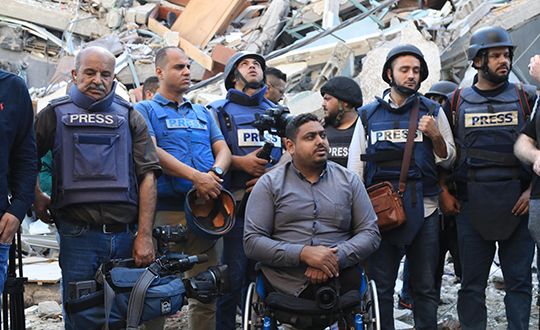Insiders’ perspective: how does a journalist check news?

To counteract fake news is an important part of journalism. The task of journalists to guide people through disinformation and misinformation is more important than ever. In the campaign #StickToTheFacts we highlight the importance of sticking to the facts and searching for reliable information. In this article, Loes Witschge, fact-checking journalist at AFP*, shares how she is taking on this task in the face of an ever-increasing amount of misinformation.
Agence France-Presse (AFP) is the oldest, and second largest, press agency in the world. Next to providing fast, comprehensive and verified coverage of news, AFP is also a world leader in digital verification. With dedicated journalists working from all parts of the world, the AFP fact-check department investigates and disproves false information, focusing on items which can be harmful, impactful and manipulative.
Loes Witschge, working for AFP as a fact-checking journalist from the Netherlands*, gives us an inside look into her work.
“As a fact-checking journalist, I verify potentially false claims made on social media, especially Facebook. I don’t do this alone - I’m part of AFP’s worldwide fact-checking network, now counting 86 journalists in more than 30 countries.
There are lots of different methods to debunk misinformation. In some cases, a reverse image search is enough to establish that a picture said to be recent is actually two years old - like in a debunk I did of a post that said members of the Dutch cabinet were violating anti-coronavirus measures. I sometimes use digital verification techniques like geolocation with Google Maps and Street View and I often consult experts and authorities like police.
Misinformation and disinformation can have real, immediate effects. False statements about Covid-19, for example, can result in infections. In the long-term, disinformation aimed at discrediting politicians or people running for office, or a country’s institutions or media can erode trust in democracy.
A lot of online misinformation triggers an emotional response, like outrage, which can make it very attractive to immediately hit the share button. That’s why counting to 10 can already have an impact. Pausing to think before you share is one of the four steps in the ‘SIFT’ method, aimed at reducing misinformation. If you want to go deeper, this 90-minute course by the International Fact-Checking Network could be a great starting point.”
*This article was written when Loes Witschge was working for AFP. For the #StickToTheFacts campaign the article has been re-published, at this time Loes Witschge was no longer working at AFP.
